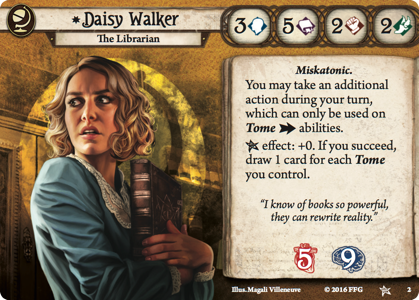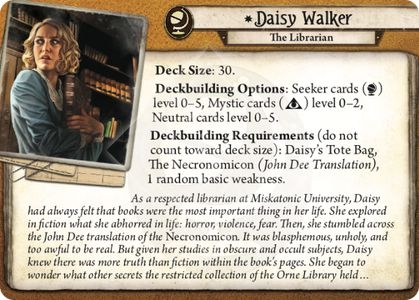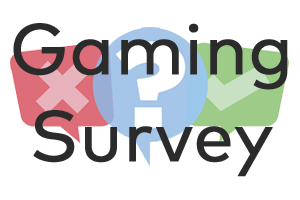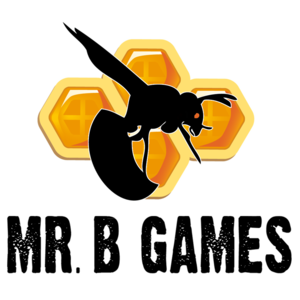Lovecraft and Monsters and Rats, Oh My! – A Review of Arkham Horror: The Card Game
With The Path to Carcosa releasing this week, I thought taking a look at Arkham Horror: The Card game would be appropriate. There are a lot of things to consider for this game, so let’s see if it’s a good one for you to check out.

I love a lot of the Arkham Horror Files games and most games based on the Lovecraft mythos. The giant monsters, being worried about every action or inaction, and the prohibition era theme all really catch my attention, but the games are more than just that. I enjoy co-operative games a lot, but they often suffer from quarterbacking – where one player tells everyone else what to do. Most of the games with this theme have enough randomness to mitigate any quarterbacking.
Arkham Horror: The Card Game is a very different take on the Arkham Horror style of game. Usually the players are different characters with various attributes and skills, and that’s still present in this game. However, unlike most other games in the Arkham Horror Files, the end goal of Arkham Horror: The Card Game isn’t readily apparent because this isn’t a traditional card or board game. The best way I know to explain it is that it is an RPG on rails. There’s a big story, and you’re dealing with a part of it, following the rules of the game, but doing everything you can to fight the uphill battle. You’ll become connected with your character and whenever something bad happens, you’ll feel it with them. When there’s a big success, your group will cheer.
In order to talk more about the game, I’ll need to cover how one prepares to play. In Arkham Horror: The Card Game, each player takes on an investigator. These characters have various skills and weaknesses, but overall work very similarly to each other. For a given character, you’ll build a deck composed of cards that the character can use. For example, let’s look at Daisy Walker:

Investigators have four skills across the top of their card. Willpower, Intellect, Combat, and Agility. These skills range from 2-5 on the investigator cards, so Daisy is great with her intellect, but she’s not the greatest fighter or the most agile character. Normally during a turn players get three actions, so Daisy’s free extra Tome action can be quite useful if she has a Tome to use. She has 5 health, which is the lowest of any character so far, and 9 sanity, the highest of any character so far. This clearly puts Daisy in a researching and exploring role rather than a combat one.

There are instructions on the back of Daisy’s card on how to build her deck. She can use Seeker cards, which are usually best at investigating and using her intellect. She can also use some Mystic cards, so she can learn some lower-level magical spells. She also can take Neutral cards, which can help round her out as a character. The instructions have a suggested starter deck, so you can come into the game not knowing every card and still be alright. She also has three required cards, and this is one of the most interesting things about Arkham Horror: The Card Game. Any given character has a set of cards that must be included in decks made for them. For Daisy, this is her Tote Bag and The Necronomicon. Daisy’s Tote Bag allows her to have more assets in play, meaning she can have more Tomes for that free extra action. The Necronomicon, on the other hand, is not a good card for the player, and this is what makes Arkham Horror: The Card Game different. You must include cards you don’t want to, not because they aren’t useful for you, but because they outright hinder you during the game.

For Daisy, her personal weakness is The Necronomicon. This is an evil, cursed book. When the player draws it, they immediately have to play it. Daisy can’t help but open it and start reading it. Before touching on what that means for Daisy, I have to cover another unique aspect of Arkham Horror: The Card Game.
When performing a skill check – such as when looking for clues or attacking an enemy – you compare your aptitude with that kind of action against the difficulty. For example, let’s say that Daisy wanted to look for clues to figure out what is going on in the story. She would compare her Intellect (a skill value of 5) against the difficulty of finding a clue (a shroud value of 2, let’s say). In short, this means that Daisy is comparing her skill of 5 to a difficulty of 2, which seems like an easy task. However, the world of Arkham Horror: The Card Game is hardly so easy. To perform the check, the player will pull a random Chaos Token from a pre-set collection referred to as the Chaos Bag. Think of this like rolling a die, but with more options. In order to succeed, Daisy’s skill and the Chaos Token have to meet or exceed the difficulty of the challenge. Daisy could draw anywhere from a +1 to a -3 and still succeed at her task, and there are a variety of numbers in the Chaos Bag. There are also icons, which are scenario specific and can allow for more theme and story telling than a simple die roll could ever replicate. The Chaos Bag also changes with the difficulty of the game, giving the player a number of ways to play. Story elements can also modify the Chaos Bag, leading to more story telling.
The last thing to understand about the Chaos Tokens is that there are two icons in the bag that are of particular note. There is an Elder Sign, a blue star token which is unique for each investigator. For Daisy, this token is +0, but she gets to draw a card for each Tome she has. This value won’t help her succeed at tasks, but she gets to draw more cards, which is usually a good thing. There is also a Tentacle, a red token, which is the dread of anyone who plays this game. This means that you have failed your attempt, no matter what it was, no matter how good your character normally is at the task, no matter how easy the task is. There is only one in the bag, and with 15 to 20 other tokens on average, this shouldn’t be too large of a concern, but it is always a consideration.
Let’s go back to Daisy’s personal weakness. While The Necronomicon is in play, any Elder Signs are considered Tentacles for her skill checks. This means Daisy automatically fails twice as often in the game, which is a very bad thing. She can get rid of The Necronomicon by reading it, but this causes her to lose sanity, which can lead to her being knocked out of the game. It’s a tough situation no matter how you approach it, but with all the other things coming at you in the game, you’d better decide quickly how you’re going to deal with this problem before you move onto the next one.
Another thing that makes Arkham Horror: The Card Game unique is how you modify your decks. As stated earlier, each character card lists what classes of cards they can use, but at the beginning of the campaign (more on that shortly), you have no experience points, so you have to take only level 0 cards. As you gain XP in the scenarios that you play, you spend it to upgrade your change your cards, allowing you to tweak your deck but not change it completely. You build your deck and it feels like you’re part of a story, changing out equipment after you deal with a situation. Realizing that monsters can be bigger than you feared, so packing some extra weapons or better protection may be in order. This limited editing of your personal deck makes the game feel more personal, instead of getting random items from a large shared deck.
The last thing that really sets this game apart in my eyes is the story and how it’s dealt with in this game. In the core set, there is a three part story where players will go through each scenario. Each scenario has its own setup, location cards, monsters, and surprises. The first scenario, The Gathering, is a great introduction to the game. I’ve probably played it a dozen times and its still can surprise me. Monsters coming up earlier or drawing a tentacle token at the wrong time can seriously change how the game is going and what your next move is. The second and third scenarios have fun twists as well, and have some aspects that change based on decisions made in earlier scenarios. This three part adventure is fun, but the game really shines with a longer story. The Dunwich legacy finished production not too long ago, and as an eight part story, it really showed that decisions can be permanent, actions have consequences, and that sometimes you’ll zig when you should have zagged.
That all being said, there are some concerns with the model. Surprises are great, but they really only hit home once. You can replay scenarios and storylines, but the big gotcha moment won’t be as surprising as the first time. It is a Living Card Game, which is great in that it’s not a randomized product, but it does mean that there is a monthly cost to keep the story going. I like to think of it like this: Arkham Horror: The Card Game is an interactive, episodic, epic story that is more fun and more interesting than a movie. It’s something I can share with others or play solo, has some fun twists and turns, but ultimately is an enjoyable challenge to fight against and win.

If you want to know more about the game, read up about it over at the Fantasy Flight Games story site. The articles written when the game was first announced explain the aspects of the game very well. If you enjoy podcasts, I would highly recommend checking out Mythos Busters. They talk about not only their experiences, but also cover card previews, custom scenarios, and a number of other fun things relating to Arkham Horror: The Card Game. If you’re in the Cleveland, OH area, I’d love to teach you the game if you want to check it out. Just contact me!





